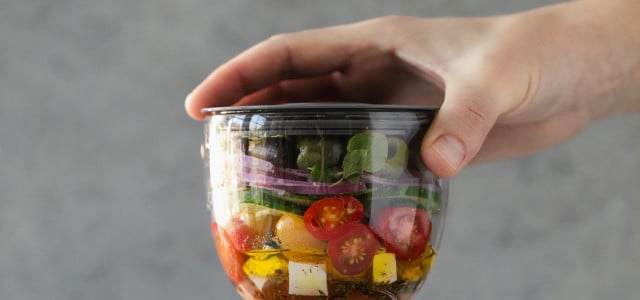Cabbage is something of an unsung hero in the vegetable world. Over 100 cabbage types are grown around the world, each one with a unique look and taste. We’ll take a look at some of the most common cabbage varieties, their nutritional content, and how to prepare them.
Green Cabbage – The Classic

Green cabbage is one of the most common cabbage varieties. Even though it is primarily known as a winter vegetable, you can buy American-grown cabbage all year long. Green cabbage is especially popular to eat in the fall and winter because it can boost the immune system due to its high vitamin C content.
This cabbage type also contains significant amounts of vitamin C, vitamin K, calcium, iron, and magnesium — talk about a health boost! Not only that, but green cabbage also has a fairly high fiber content which keeps your gastrointestinal tract ticking along.
Coleslaw is one of the most popular uses for green cabbage, but you can also ferment it and turn it into sauerkraut. (Try this recipe from “TheSpruceEats”, for example, but don’t forget to save the sauerkraut juice. Green Cabbage is also one of the best cabbage varieties for stews, soups, and cabbage rolls.
Red Cabbage – Slightly Sweeter Type
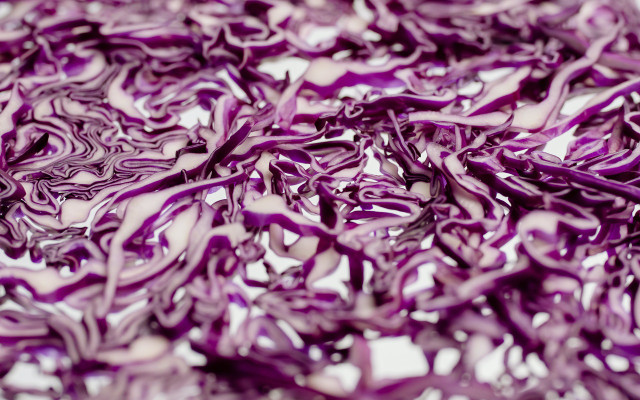


Red cabbage is another of the most well-known cabbage types. You can find American-grown red cabbage all year long. Like its green relative, red cabbage provides you with a high amount of vitamin C and also contains vitamin E, vitamin K, and some B vitamins.
Use this cabbage variety for a fresh summer salad or add it alongside green cabbage in your coleslaw (which will be ready in no time if you follow this recipe by “inspired taste”.) Red cabbage is a staple in German cuisine, often as a side dish for heavy meats. However, you can easily replace the meat with a vegetarian alternative, such as vegetarian patties, healthy tofu, or a vegan roast.
Savoy – Curly Cabbage
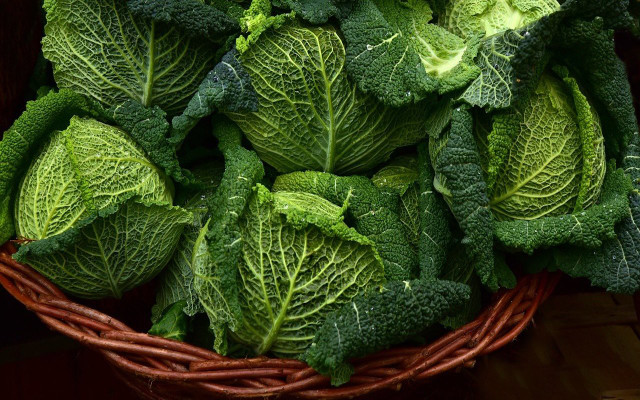


Often confused with green cabbage, Savoy cabbage is curlier in appearance and earthier in flavor. This type of cabbage doesn’t have the same crunch that is normally associated with raw cabbage and is better eaten cooked, roasted, sautéed, or braised.
Like other cabbage types, Savoy cabbage contains vitamin A and vitamin C, but where it really shines is vitamin K. One cup of raw, shredded Savoy cabbage has 76% of the recommended daily value of vitamin K.
Kale – Superfood Cabbage
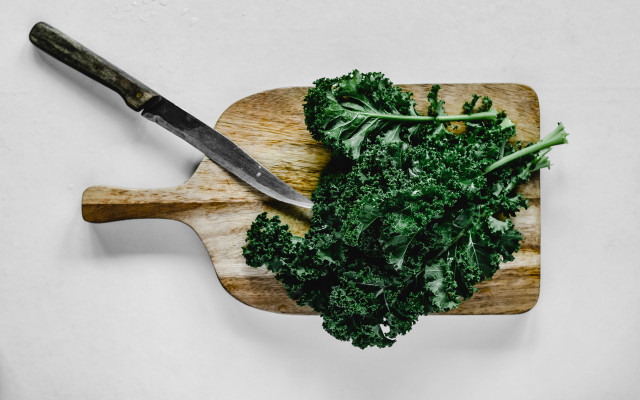


Kale is a classic winter vegetable most commonly available from November to February and is best consumed in spring, fall and winter. It is one of the most nutritious cabbage varieties — 3.5oz of kale provides you with your daily dose of vitamin C and more calcium than a cup of milk. This cabbage type also provides you with a considerable amount of vitamins, as well as potassium, magnesium, iron, phosphorus, and zinc.
Some of the best ways to eat kale include adding it to hearty winter soups like Caldo Verde, in salads, stir-fried with vegetables and quinoa, or as an ingredient in homemade pesto. You can also add this superfood into smoothies for an extra boost!
Cauliflower
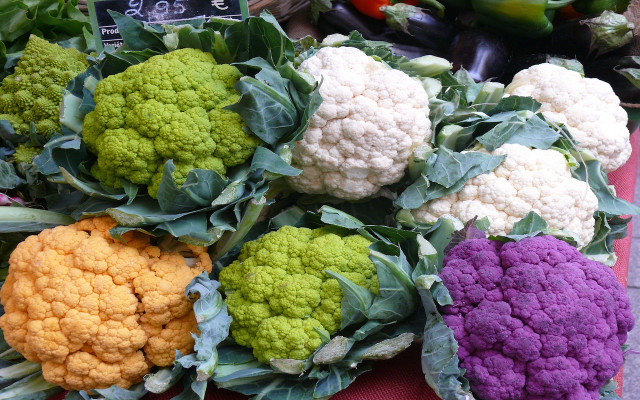


Like other cabbage varieties, cauliflower primarily provides us with a high amount of vitamin C and also contains potassium, calcium, magnesium, vitamin K and some B vitamins. It is in season from June until November in the more northern states, and longer for regions with warmer climates.
Cauliflower has a much milder taste than other cabbage types, which makes it a more popular vegetable. To get the most nutrients, it’s best to eat cauliflower raw. Try making a cauliflower salad with some oil, vinegar, and spices.
But cauliflower is also delicious (and still nutritious) cooked — the options are endless. Roasted with bread crumbs and parmesan, this cabbage type makes a lovely side dish. Blitz it up in a blender or food processor to make cauliflower rice. And of course, you can always use it to make a gluten-free pizza crust (e.g. with this recipe by “Damn Delicious”).
Brussels Sprouts
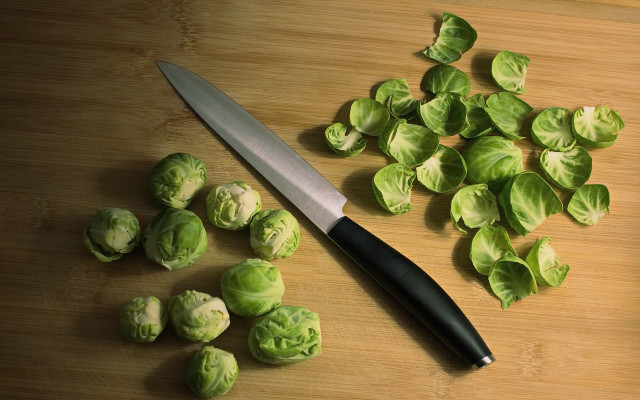


Brussels sprout season typically begins in September and ends in May, depending on your region. So this cabbage type is considered a typical winter vegetable.
In terms of vitamin C content, Brussels sprouts top the list ahead of all other cabbages varieties. 3.5oz of Brussels sprouts contains almost the entire daily requirement of vitamin C. In addition, Brussels sprouts provide you with notable amounts of iron, potassium, calcium, magnesium, and B vitamins.
These mini-cabbages are delicious when roasted, and go with a variety of different flavor profiles. You can also throw them into salads, on pizza, and in pasta dishes. However, if you want to benefit from the high vitamin C content, you should be careful not to overcook them.
Did You Know? Brussels sprouts are one of the most protein-rich vegetables. One cup of cooked sprouts contains four grams of protein.
Romanesco – The Beauty



The whimsical and geometric appearance of this cabbage type can entice even the pickiest of eaters. Like its other cabbage family members, romanesco is packed with vitamin C, as well as vitamin A, iron, calcium, and protein.
As it tends to wilt in high heat, romanesco is a late spring or early fall crop. That being said, you can enjoy it in many ways throughout the year. While most people tend to prepare it similarly to broccoli, feel free to get creative – romanesco can handle bold flavors. We suggest you try this recipe for Pan-Roasted Romanesco with Hazelnuts by “Bon Appetit”.
Kohlrabi
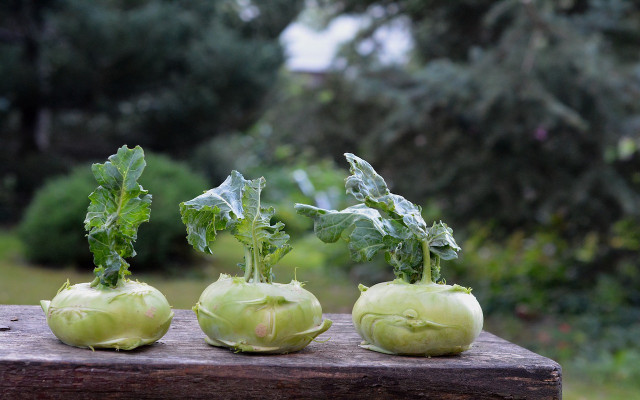


Packed with selenium, magnesium, potassium, calcium, some B vitamins, and vitamin C, kohlrabi is perhaps the most underrated of cabbage varieties. The leaves are incredibly rich in nutrients as well, but often end up in the garbage! While you can find kohlrabi all year round, its peak season is from late fall until early spring.
This cabbage type can be consumed raw in salads (like this crispy apple and kohlrabi salad recipe by “Cookie+kate”), but can also be roasted with garlic and parmesan, cooked as a side dish, or used as an ingredient in soups and stews.
Broccoli – The Calcium-Rich Cabbage
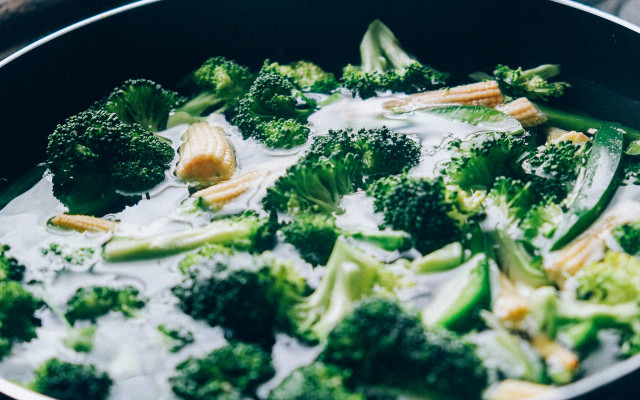


It may not be immediately obvious from the name, but broccoli also belongs to the cabbage family. The vegetable boasts a high vitamin C and calcium content, making it important in a balanced vegan diet. It also contains significant amounts of vitamin A, iron, folic acid, magnesium and potassium.
Depending on your region, broccoli is in season from June until October, but in warmer climates, it is often available year-round.
You can eat broccoli raw on its own, or tossed into a salad. Cooked, it is delicious in soup, added to quiches and pasta as well as in stir-fries and casseroles. It really is an all-rounder in the vegetable world and an easy way to add some nutrients to any meal.
Bok Choy and Napa – The Chinese Cabbage
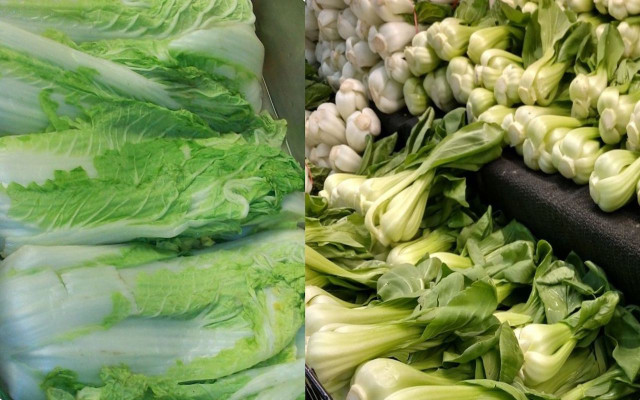


Depending on what you like to cook at home, these Chinese cabbage types may be a staple in your fridge. Both Napa cabbage and Bok Choy are winter vegetables so they’ll have the best flavor between November and May.
Just like the rest of the cabbage family, Napa and Bok Choy are good sources of vitamin C, vitamin A, calcium, and iron. Napa cabbage is also high in zinc, while Bok Choy has impressive amounts of vitamin K.
The ways to prepare these cabbage varieties range as they can both handle very strong flavors. Napa cabbage is commonly used for kimchi, or as filling for Chinese dumplings. (You’ll find a traditional recipe for kimchi on the blog “Korean Bapsang”.) Bok Choy, on the other hand, is more often used as a standalone side dish. You can roast it in a pan with onions and vegetables or mix it with ginger, garlic and mix it into a regular noodle soup. (A detailed recipe for Bok Choy Noodle Soup is available at “The forked spoon”.)
Important Information regarding Health-related Topics.
** Links to retailers marked with ** or underlined orange are partially partner links: If you buy here, you actively support Utopia.org, because we will receive a small part of the sales proceeds. More info.Do you like this post?







